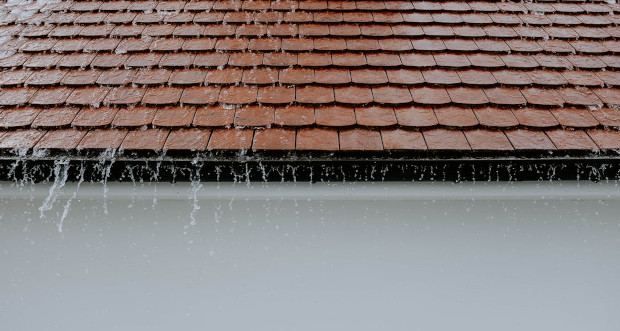The Ultimate Spring Gutter Cleaning Checklist

The Ultimate Spring Gutter Cleaning Checklist
Spring has arrived, bringing with it blooming flowers, chirping birds, and — unfortunately — the need to clean those clogged gutters. After months of autumn leaves, winter storms, and all sorts of debris building up, your gutters are practically BEGGING for attention. I’ve been cleaning gutters for over 15 years (professionally and on my own homes), and I’ve learned that having a systematic approach to gutter cleaning makes this dreaded chore much more manageable.
Most homeowners underestimate just how critical proper gutter maintenance really is. Neglected gutters don’t just look unsightly — they can cause serious structural damage to your home, costing thousands of pounds in repairs. Water damage isn’t something to mess about with!
So let’s roll up our sleeves and get started with this comprehensive checklist that’ll help you tackle your spring gutter cleaning like a pro. No fuss, no frills — just practical advice from someone who’s made every mistake in the book (so you don’t have to).
Safety First: Essential Preparations
Before you even think about climbing that ladder, let’s talk safety. Gutter cleaning can be dangerous — according to the Royal Society for the Prevention of Accidents, ladder falls account for numerous household injuries each year. I nearly took a tumble myself last spring when a poorly positioned ladder shifted unexpectedly!
Start by checking your ladder for any damage. Loose rungs, cracks, or bent sections are absolute no-gos. Your ladder should be sturdy & extend at least three feet beyond the gutter line. For two-story homes, don’t attempt to overreach — consider hiring professionals if you’re uncomfortable with heights.
Wear thick work gloves to protect against sharp objects and potential bacteria in the gutter muck. Safety goggles are crucial too — nobody wants rotting leaves splashing into their eyes (trust me on this one). And perhaps choose a day when it’s not howling with wind or threatening rain. Weather conditions make a MASSIVE difference to safety.

The Right Tools for the Job
Having proper equipment makes gutter cleaning less of a chore and more of a quick maintenance task. You don’t need anything fancy — just a few basics that’ll serve you well year after year.
A small plastic scoop works brilliantly for removing debris. You can purchase specialised gutter scoops from any DIY shop for about £5, but an old plastic kitchen spatula or even a cut plastic bottle works almost as well. I’ve been using the same modified plastic container for years!
You’ll also need a garden hose with a spray nozzle attachment to flush the gutters after scooping. For those harder-to-reach areas, consider investing in a gutter cleaning attachment that extends your reach from the ground. These typically cost between £15-£30 at most home improvement centres and have saved my back countless times.
Don’t forget a sturdy bucket with a wire hook that can hang from your ladder or gutter. This saves constant trips up and down to dispose of debris. And some heavy-duty rubbish bags for the final cleanup will make disposal much simpler.
Spot-Checking Before You Begin
Before diving into the full clean, take a few minutes to assess the state of your gutters. This preliminary inspection can save you time & potentially identify serious issues early.
Walk around your house and look for obvious signs of gutter problems — sagging sections, visible plant growth, or water marks beneath the gutters are tell-tale indicators. If you notice water stains on your exterior walls, this often signals that gutters are overflowing during rainfall.
Check your downpipes for blockages too. Sometimes a single clog at the top of a downpipe can cause problems throughout the entire system. Tap the downpipe with your hand — a hollow sound typically means it’s clear, while a dull thud might indicate a blockage.
Are there any sections that have pulled away from the fascia board? Make note of these areas as they’ll need reattaching after cleaning. Sometimes loose gutter sections can be fixed with simple gutter spikes or brackets available at any hardware shop.

The Cleaning Process: Step by Step
Now for the messy bit! Start at the downpipe and work your way outward. This approach prevents you from pushing debris toward already-cleaned sections. It’s a rookie mistake I made for years before figuring out a better system.
Using your scoop, remove the larger debris first — leaves, twigs, etc. Place this directly into your hanging bucket rather than dropping it on the ground (which only creates another mess to clean up later). Work in small sections of about 1-2 metres at a time.
Once you’ve removed the bulky material, use your garden hose to flush out smaller particles and check your water flow. The water should run freely toward the downpipe without pooling. If you notice standing water, you may have an alignment issue where the gutter isn’t sloped correctly toward the downpipe.
Don’t forget to clean the gutter guards if you have them installed. These can become clogged with fine debris over time, rendering them less effective. A simple scrub with a stiff brush usually does the trick.
Tackling Stubborn Downpipe Blockages
Downpipes (or downspouts) are often the most problematic part of the gutter system. When they get blocked, the entire system essentially becomes useless. But clearing them doesn’t have to be complicated.
If water isn’t flowing freely through your downpipes after flushing the gutters, you’ve likely got a clog. Start by tapping on the downpipe to locate approximately where the blockage might be. Sometimes you can dislodge minor clogs just by tapping firmly with your hand.
For more stubborn blockages, try using your hose at full pressure from the top of the downpipe. The force of the water might push the debris through. If that doesn’t work, a plumber’s auger (sometimes called a drain snake) can be effective — these can be rented from most tool hire shops for about £20 per day.
In extreme cases, you might need to disassemble sections of the downpipe to access the blockage. This is typically a simple process involving unscrewing or unclipping the pipe sections. Just remember the order in which you take things apart!

Inspecting for Damage & Making Repairs
With everything clean, it’s the perfect opportunity to check for damage that might have been hiding beneath all that debris. Small holes, cracks, or separations at seams can lead to big problems if left untreated.
Small holes (less than 1 cm) can typically be repaired with gutter sealant. Apply this to dry, clean gutters and allow it to cure completely according to the manufacturer’s instructions — usually about 24 hours.
For larger holes or cracks, you might need a patch kit or even section replacement. Gutter patch kits are available at most DIY shops for around £10-£15 and include everything you need for a basic repair. For serious damage, it’s often more cost-effective to replace the affected section entirely.
Check the fascia boards behind your gutters as well. Water damage or rot here can cause your gutter system to fail, no matter how clean it is. Soft or discoloured wood needs attention from a carpenter before it worsens.
Preventative Measures Worth Considering
While you’ve got the ladder out, consider implementing some preventative measures that’ll make your next cleaning easier.
Gutter guards can be a worthwhile investment, particularly if your home is surrounded by deciduous trees. They come in various styles, from simple mesh screens to more sophisticated systems. Prices range from £5 per metre for basic mesh to £25+ per metre for premium systems. I installed some three years ago and they’ve cut my cleaning time in half!
Consider installing downpipe strainers at the top of each downpipe. These simple devices catch debris before it enters the downpipe, preventing those frustrating blockages. They’re inexpensive (usually under £5 each) and can save hours of work.
If overflowing gutters have been an issue, you might want to consider installing additional downpipes. A typical house should have a downpipe approximately every 12 metres, but homes in areas with heavy rainfall might benefit from more.

The Bottom Line
Gutter cleaning might not be the most glamorous homeownership task, but it’s certainly one of the most important. A couple of hours spent clearing debris now can save thousands in potential water damage repairs later. Plus, there’s something oddly satisfying about seeing clear water flowing properly through a freshly cleaned system!
Remember to schedule this task twice yearly — once in spring and again in late autumn after the leaves have fallen. Consistency is key to maintaining a functional gutter system that protects your home year-round.
And if you find yourself repeatedly putting off this chore or struggling with the height and safety aspects, there’s no shame in calling professionals. Most gutter cleaning services in the UK charge between £75-£150 for an average-sized home, and the peace of mind might well be worth the expense. Your home (and your spouse) will thank you!
Guest Article.




